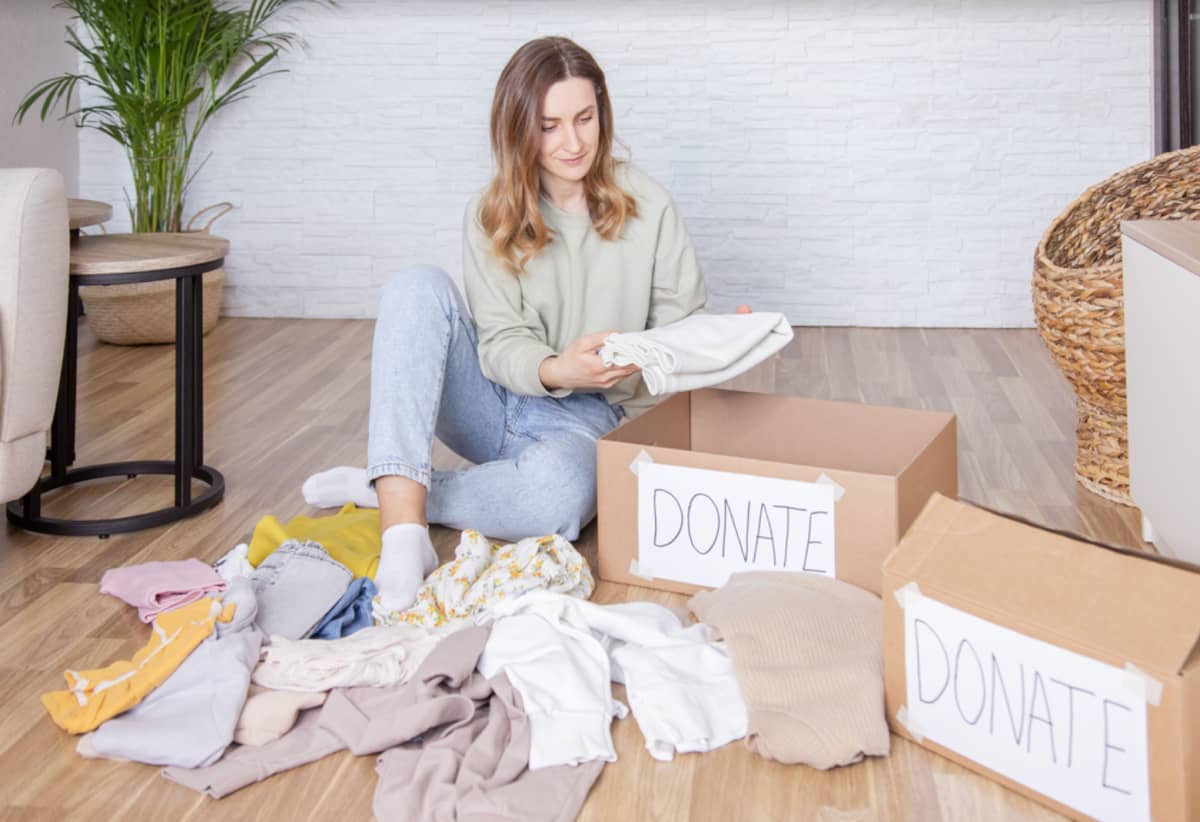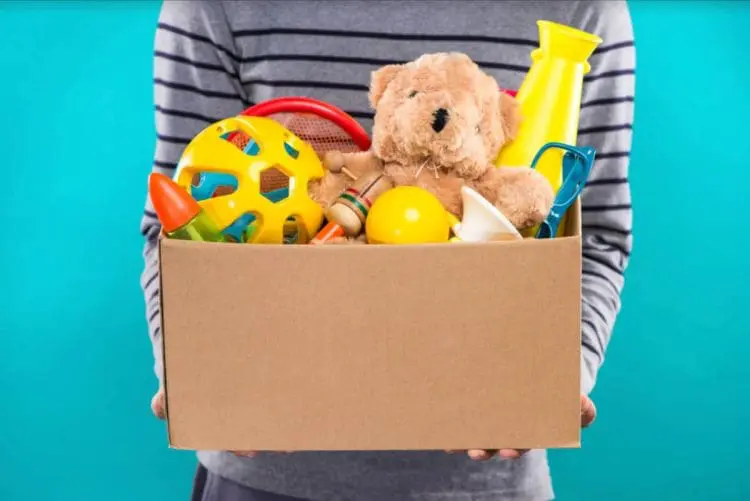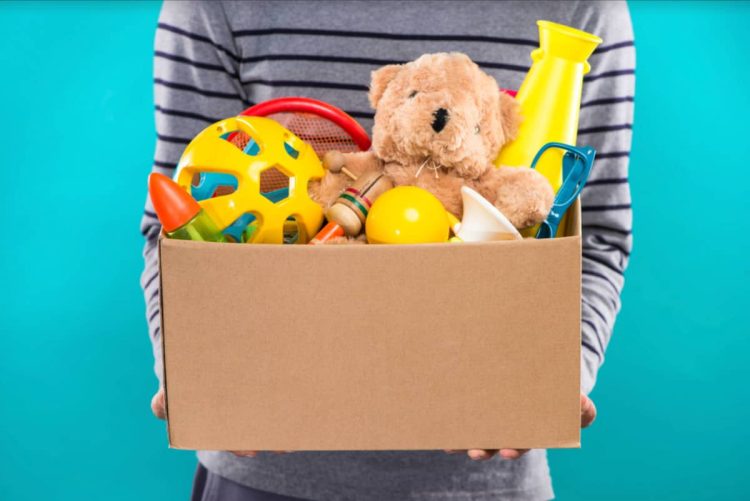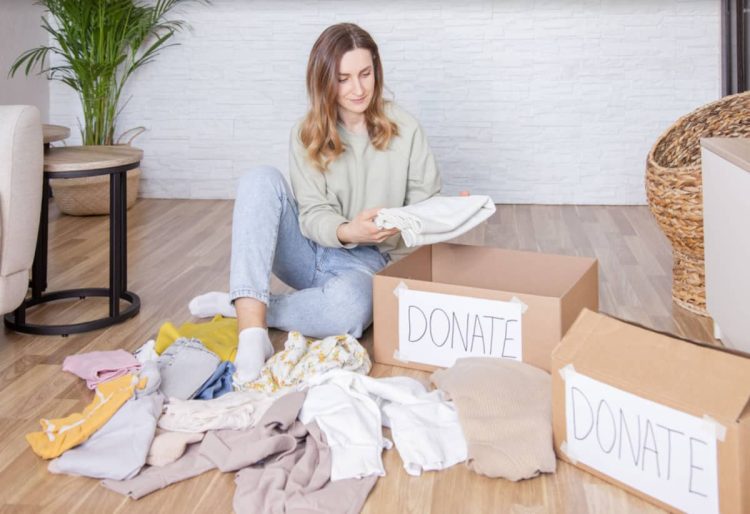
[ad_1]
Some people are blessed to have more than they need. Other people and families are less fortunate and can’t afford basic needs. Therefore, if you’re looking to get rid of old items and do something good, a donation is a perfect opportunity to do both. What is useless to one person is often very valuable to another. Especially if you have three of something and they have none! Giving donation items to those that need it can be a blessing for the giver and the receiver.
In addition to being philanthropic, donating old items so that they can be reused is also a good thing to do for the environment. However, organizing your donation items can be overwhelming without proper planning. Fortunately, this article gives you advice on how to prepare items for donation the right way. Here are some ways to help you organize old items, pack them, deliver or drop them off, and overall make donating easier.


Decide Where To Donate Your Items
Before organizing and packing your old items for donations, know where you’ll donate the items. The last thing you want after packing your items is to have trouble finding a place to store them as you look for a place to donate.
Additionally, knowing where you’re donating your items allows you to know what types of items you can donate. You don’t want to pack certain items only for them to be rejected. For instance, Easy Donation Pickup offers a free donation pickup service that does not accept items like mattresses, TVs, broken items that need repair, and large furniture. If you are wondering where to donate baby items, the experts at Easy Donation Pickup can help you track down a local charity that serves underprivileged families.
If you need help in determining where to donate your items, ask friends or family where they donate old items. You can also do a quick search online about the a donation site near you and ask about their social distancing and safety guidelines. This will make the donation process easier and hassle-free for you.
How To Organize Donations Using A Systematic Approach
Irrespective of the size of your apartment, thinking about the items you want to donate can be overwhelming. Therefore, to relieve the anxiety, come up with an organized approach before starting the whole process. The best approach is to have designated places or rooms to pack items and then work on them, room by room.
When you’re organizing items, room by room, it becomes easier to determine which items you want to donate and which you don’t. Avoid the temptation of randomly jumping between rooms; rather, stick to one room until you’ve cleared it out. Using a systematic approach ensures you’re more organized with your donations. It also ensures you don’t end up with piles of items all over the house.
Furthermore, when organizing the items, consider categorizing similar items together because different donation centers accept different types of items. For instance, the drop-off center near you may accept your books but may reject your electronic donations. Therefore, make separate piles for old clothes, books, shoes, electronics, and other miscellaneous items to make the donation process smoother.


Pack Your Donation Items
Here is how to pack clothes for donation. It’s important to ensure that the clothing items are clean, well-organized, and appropriately packed to maintain their quality. Start by sorting the clothes into categories such as shirts, pants, and outerwear, and fold them neatly. Use sturdy boxes or bags to pack the clothes, making sure they’re not overstuffed to avoid wrinkles or damage. Label each box or bag clearly with the contents, especially if you’re donating specific items like children’s clothing or winter wear. If possible, separate any delicate or high-quality items and pack them in tissue paper or protective coverings to prevent damage. Finally, check with the donation center for any specific guidelines they might have, such as requests for certain types of clothing or restrictions on what they can accept. Proper packing ensures that your donation arrives in good condition and can be quickly distributed to those in need.
After categorizing your items, put them in packs or bags for easy transportation. Since some people may have trouble carrying certain items, use bags or packs with handles to make carrying easy. When packing, avoid overloading your bags because heavy bags are at risk of being dropped during transportation, causing damage. When packing heavy items, distribute the items into different bags and fill the extra space with lightweight items.
Additionally, if you’re donating fragile household items, pack them correctly to avoid damage. How to pack glassware and dishes for donation? Pad the items using newspapers or bubble wraps to ensure nothing breaks and place in a cardboard box.
Clearly Label Everything
Labeling your bags and boxes is an important aspect of a successful donation. Labeling helps you as you’re going through the items and also makes it easier for donation centers to receive and sort the items. The labels can be simple. You may label the items according to categories—for instance, kitchen staff, clothes, or electronics.
When labeling, remember to use markers with thick strokes. This way, the bags can be identified even from a distance. Also, if your handwriting is small, such markers help you write in such a way that donation receivers can easily identify what’s in the bags.
Additionally, consider using special labels for bags with breakable items so that they can be handled with care. You can get stickers labeled fragile items and indicate which side should remain up to prevent damage while transporting the items. Finally, attaching an inventory list to each box after labeling your bags is wise. This will make it easier to find items and even plan how to unpack them.


Drop Off The Items
After packing and organizing your donation items, it’s time to send or drop them off at charity or donation centers. Some donation centers offer pick-up services, while others don’t. Therefore, ask your local charitable center about it. You’ll have to deliver the items if the organization doesn’t offer pick-ups. If the items are bulky, consider asking for help from friends and family. Don’t forget to ask for a donation receipt letter for tax purposes.
How To Organize Donations For A Cause
Organizing donations for a cause requires thoughtful planning and clear communication to ensure the effort is successful. Begin by identifying the specific needs of the cause, whether it’s clothing, food, money, or other essentials, and communicate these needs clearly to potential donors. Set up collection points that are easily accessible and clearly marked, and provide detailed instructions on how and where to donate. Create a system for sorting and categorizing donations as they come in, such as separating clothes by size or food by type, to make distribution more efficient.
Consider recruiting volunteers to help manage the donation process, from collection to sorting and delivery. Finally, maintain open communication with the organization or community you’re supporting, keeping them informed of the donations received and any additional needs that arise. A well-organized donation drive not only maximizes the impact of the contributions but also ensures that those in need receive the right support in a timely manner.
The Bottom Line
Donating your things is a meaningful way to make a positive impact on both your community and the environment. By giving away items you no longer need, you help provide essential resources to those who may not have access to them, whether it’s clothing, household goods, or furniture. Donations can significantly improve the quality of life for individuals and families in need, offering them support and dignity during difficult times.
Additionally, donating helps reduce waste and promotes sustainability. Instead of discarding items that might end up in a landfill, you’re giving them a second life, reducing the demand for new resources and contributing to a more sustainable consumption cycle. Donating also fosters a sense of community and generosity, encouraging others to do the same and creating a ripple effect of kindness and support. Ultimately, it’s a simple yet powerful way to declutter your life while making a meaningful difference in the lives of others.
Learning how to organize your old items for donation makes the charitable process easier and smoother. Just remember that all these efforts help you declutter your home, and at the same time, help the less fortunate. Thank you for giving!
Related Posts:
How To Get Kids Involved In Charity
Getting Organized For The Holidays: 3 Tips To Clear The Clutter
10 Clever Ways To Use Kids Name Labels
[ad_2]